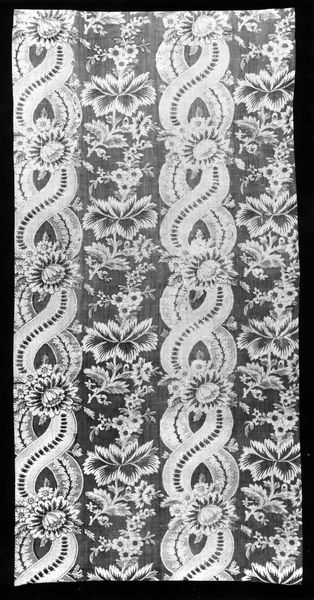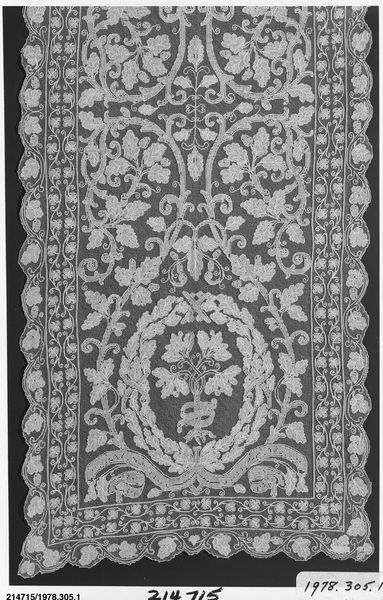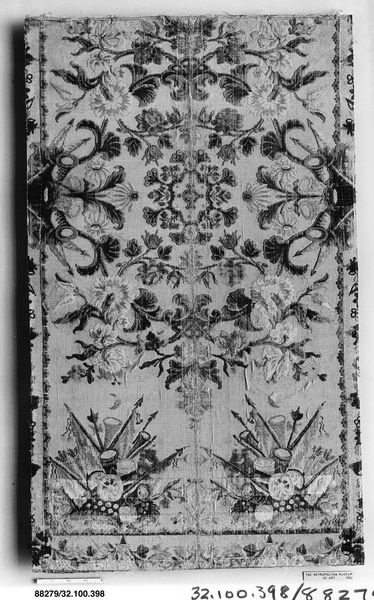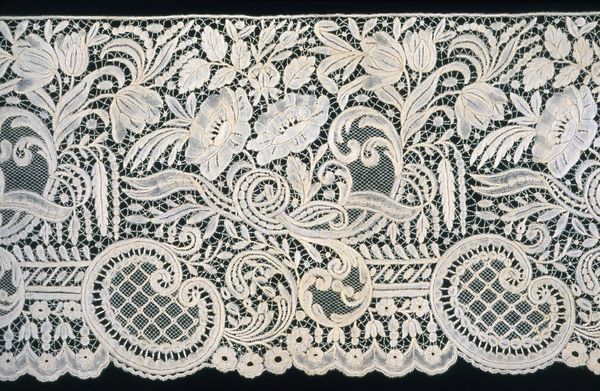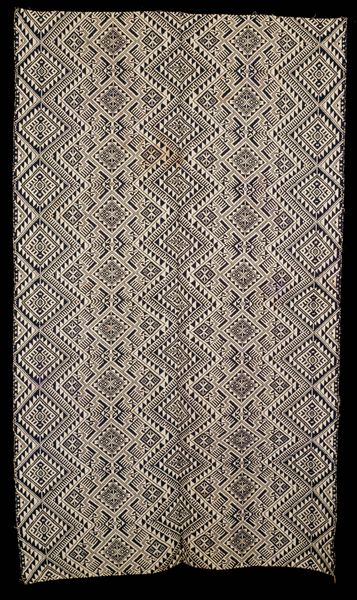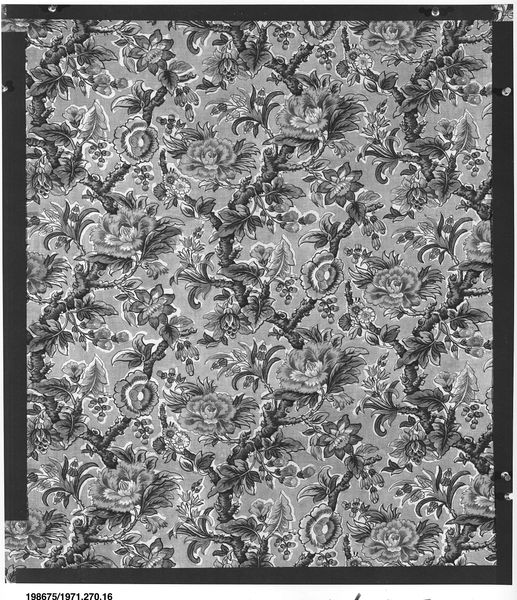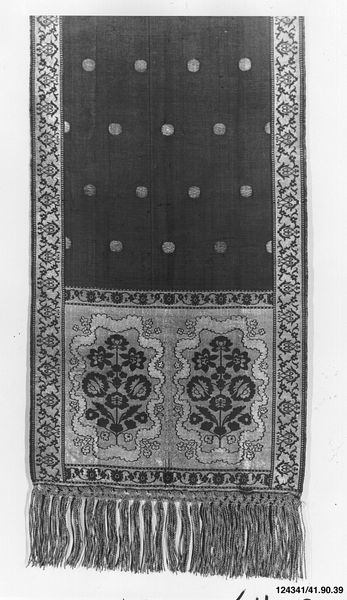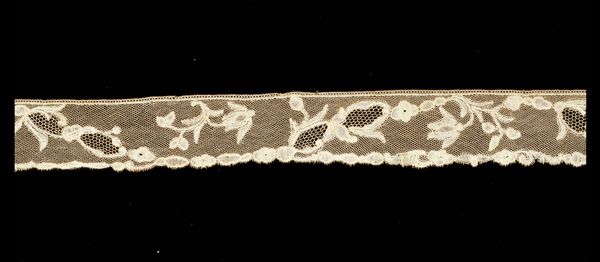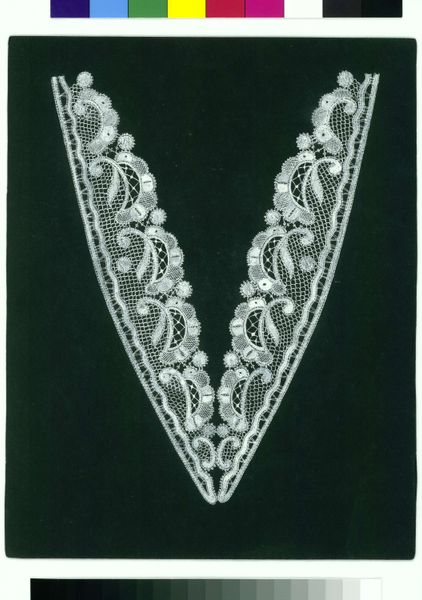
textile
#
natural stone pattern
#
man-made pattern
#
textile
#
repetitive shape and pattern
#
repetition of pattern
#
intricate pattern
#
regular pattern
#
pattern repetition
#
decorative-art
#
layered pattern
#
combined pattern
#
repetitive pattern
Copyright: Public Domain
Editor: Here we have an exquisite length of textile, known as “Border,” likely created in Italy around the 18th century. It’s a delicate, almost ethereal piece, yet there's something undeniably strong in its intricate structure. What historical perspectives might we bring to understanding its creation and significance? Curator: That’s a great starting point! Think about lace-making in 18th-century Italy: it was a highly skilled, often female-dominated, industry. These "borders" weren't merely decorative; they signified wealth and status. This particular piece, with its repetitive yet ornate patterns, also speaks to larger power structures. Who had access to such luxury, and who toiled to create it? Can we see this object as a product of a hierarchical system that benefited some while exploiting others? Editor: So, it’s not just about the beautiful design, but about the labor and the social context in which it was produced. The 'Border' in the title suddenly feels loaded. Were these patterns also a form of communication? Could the lacemakers have encoded any hidden meanings within their work? Curator: Precisely! The visual language of these textiles might be read as a form of subtle resistance, or even a silent dialogue between the makers. It makes us think about how marginalized voices can find expression even within constrained circumstances. Think about the intersection of gender, class, and artistry inherent in each knot and stitch. And about global trade at the time, its dependence on exploitation of workers. Who designed it, and what sources did they draw upon? These may never be uncovered now. But the point of art history is asking such questions and applying new knowledge. Editor: That makes me look at it very differently. I was initially drawn to its beauty, but now I see a complex narrative woven into the fabric. It’s a reminder that art isn't created in a vacuum. Curator: Exactly! By considering the historical, social, and economic forces at play, we can reveal deeper meanings and empower the stories of those whose voices were often silenced.
Comments
No comments
Be the first to comment and join the conversation on the ultimate creative platform.


